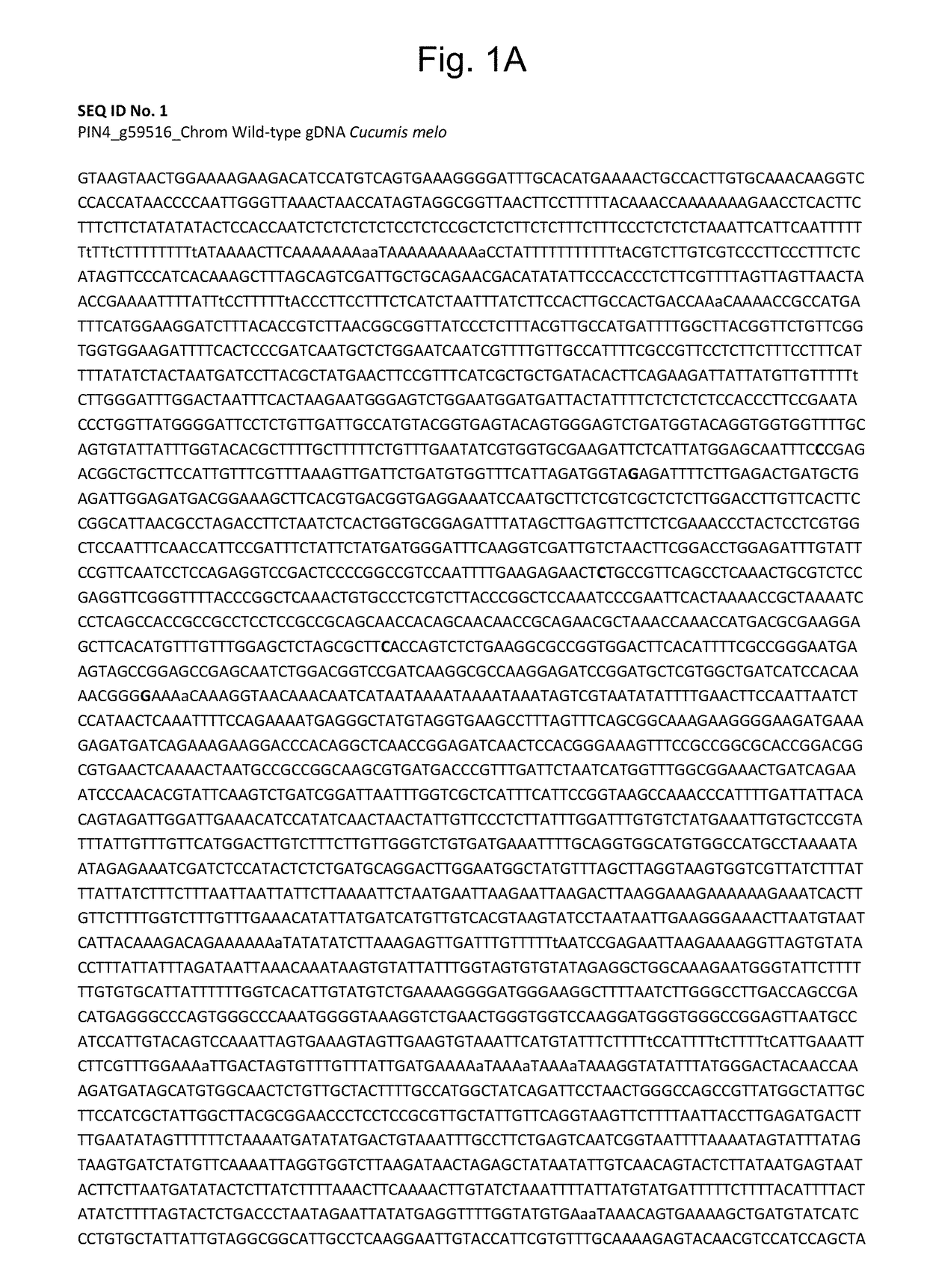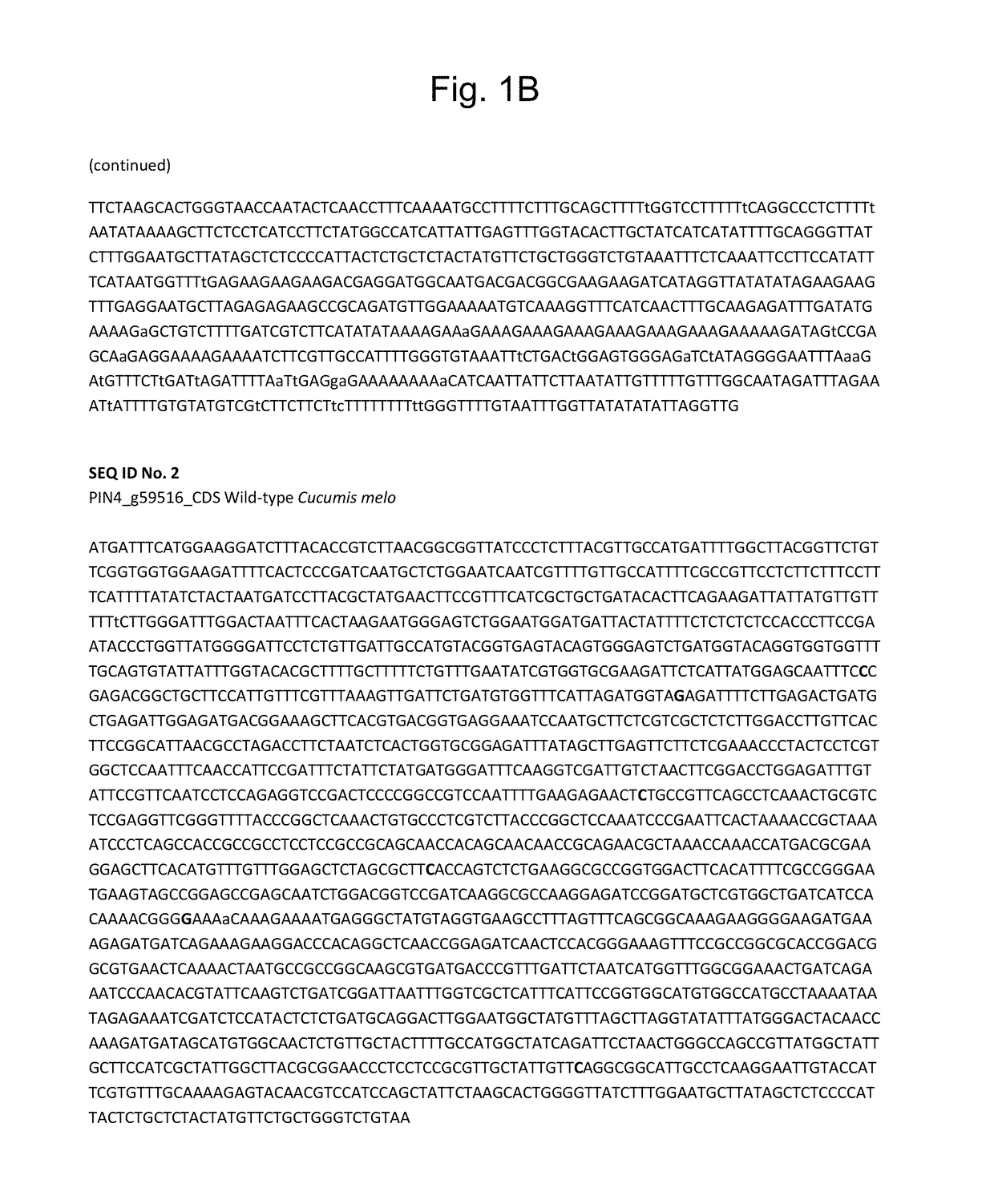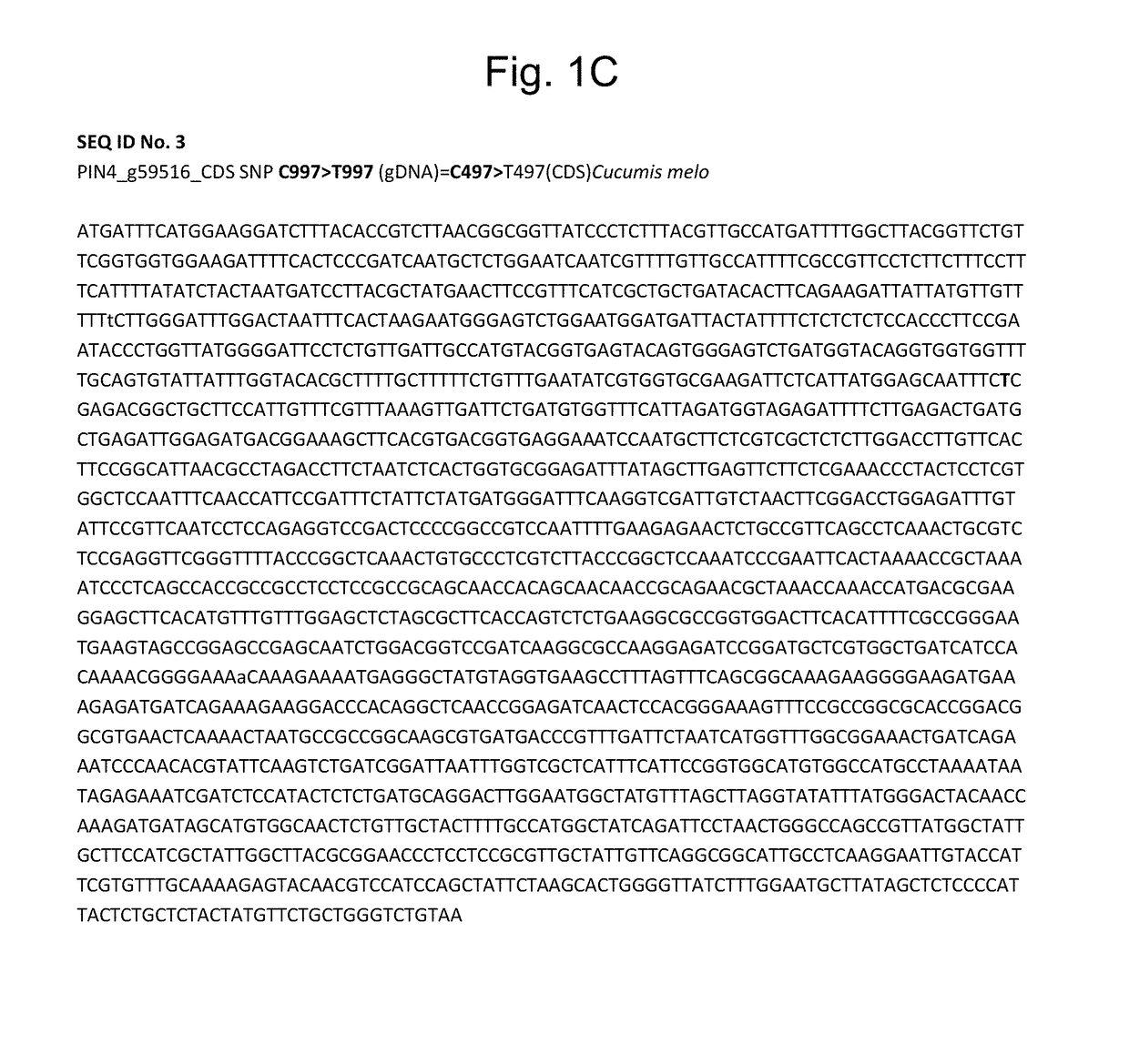Modified gene resulting in parthenocarpic fruit set
a technology of modified genes and fruit sets, applied in the field of modified genes, can solve the problems of difficult target development of seedless fruits, huge amount of energy required for fruit development, and inability to achieve and achieve the effect of strong effect on the vegetative phenotype of plants
- Summary
- Abstract
- Description
- Claims
- Application Information
AI Technical Summary
Benefits of technology
Problems solved by technology
Method used
Image
Examples
example 1
[0118]Induction of SNP Mutations in Cucumis melo by EMS
[0119]SNP mutations were induced in a population of Cucumis melo plants, with the goal to obtain parthenocarpic melon fruits. Approximately 10.000 seeds of a melon genotype were separated into two batches, which were treated with different EMS doses. For one batch a dose of 1.0% was used and for the other batch 1.5% EMS.
[0120]Seeds were germinated and 77 individuals were selected from which cuttings were made for further analysis. Phenotyping was done (Example 2) and DNA samples were obtained for further characterization and validation of the induced mutations.
[0121]Characterization of a number of the induced mutations showed that six of the induced SNP mutations were located in the PIN4 gene (Table 1). Based on these mutations, SNP markers were developed for further analysis.
example 2
[0122]Phenotyping of Cucumis melo Plants with PIN4 Mutations
[0123]Cuttings of plants having mutations induced by EMS were observed in the greenhouse. The goal of this phenotyping trial was to determine the presence of parthenocarpic fruit set. Pollination of female flowers was therefore prevented.
[0124]In a first phenotyping trial in two of the mutant events, identified by plant numbers 320 and 431 (Table 1), each of which was represented by several cuttings having the identical mutation, parthenocarpic fruit set was observed. Parthenocarpic fruits showed a reasonable size, and had a very nice brix ranging from 9 to 15. Fruits ripened normally and had a taste comparable with the original parent. Non-pollinated fruits had no seeds. Furthermore, no empty cavity in the place of the usual seed cavity was observed (FIGS. 5A-B).
[0125]Further phenotyping of mutant plants also identified parthenocarpic fruit set in cuttings of the plant identified by number 363 (Table 1).
[0126]The female fl...
example 3
[0127]PIN4 Mutations in Capsicum annuum
[0128]A population of Capsicum annuum plants was also treated by EMS. DNA was sampled and was specifically analysed to identify mutations in the PIN4 gene of Capsicum annuum. A number of mutations were identified that resulted in an amino acid change in the intracellular loop of the CaPIN4 protein as presented in SEQ ID No. 14 (FIGS. 3A-B; Table 4). The presence of the modified protein in a Capsicum annuum plant results in parthenocarpy.
TABLE 4PIN4 SNP mutations in Capsicum annuum andtheir effect on the encoded PIN4 proteinMutationMutationPlantNtpositionpositionMutationIDchangeon gDNAon CDSTypeAAchange_pos508C-C / T1411650AA changeA216V587C-T17671006AA changeP335S511G-G / A21901300AA changeG433S591G-G / A23251435AA changeG478R
[0129]The invention is further described by the following numbered paragraphs:
[0130]1. Modified PIN4 gene, the wild type of which is as identified in SEQ ID No. 1, encoding the protein of SEQ ID No. 5, or the wild type of which...
PUM
| Property | Measurement | Unit |
|---|---|---|
| Fraction | aaaaa | aaaaa |
| Structure | aaaaa | aaaaa |
| Hydrophobicity | aaaaa | aaaaa |
Abstract
Description
Claims
Application Information
 Login to View More
Login to View More - R&D
- Intellectual Property
- Life Sciences
- Materials
- Tech Scout
- Unparalleled Data Quality
- Higher Quality Content
- 60% Fewer Hallucinations
Browse by: Latest US Patents, China's latest patents, Technical Efficacy Thesaurus, Application Domain, Technology Topic, Popular Technical Reports.
© 2025 PatSnap. All rights reserved.Legal|Privacy policy|Modern Slavery Act Transparency Statement|Sitemap|About US| Contact US: help@patsnap.com



